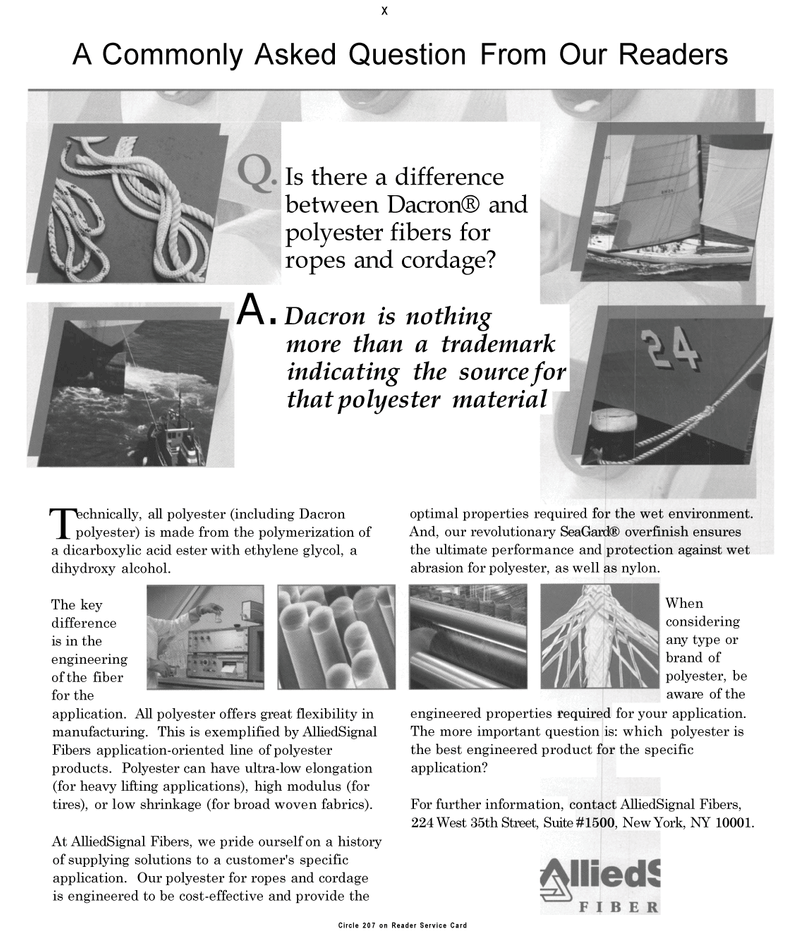
Page 17: of Maritime Reporter Magazine (September 1994)
Read this page in Pdf, Flash or Html5 edition of September 1994 Maritime Reporter Magazine
X
A Commonly Asked Question From Our Readers
Dacron is nothing more than a trademark indicating the source for that polyester material
Technically, all polyester (including Dacron polyester) is made from the polymerization of a dicarboxylic acid ester with ethylene glycol, a dihydroxy alcohol.
At AlliedSignal Fibers, we pride ourself on a history of supplying solutions to a customer's specific application. Our polyester for ropes and cordage is engineered to be cost-effective and provide the
For further information, contact AlliedSignal Fibers, 224 West 35th Street, Suite #1500, New York, NY 10001.
A.
The key difference is in the engineering of the fiber for the application. All polyester offers great flexibility in manufacturing. This is exemplified by AlliedSignal
Fibers application-oriented line of polyester products. Polyester can have ultra-low elongation (for heavy lifting applications), high modulus (for tires), or low shrinkage (for broad woven fabrics). optimal properties required for the wet environment.
And, our revolutionary SeaGard® overfinish ensures the ultimate performance and protection against wet abrasion for polyester, as well as nylon.
When considering any type or brand of polyester, be aware of the engineered properties required for your application.
The more important question is: which polyester is the best engineered product for the specific application?
Is there a difference between Dacron® and polyester fibers for ropes and cordage?
Circle 207 on Reader Service Card

 16
16

 18
18
